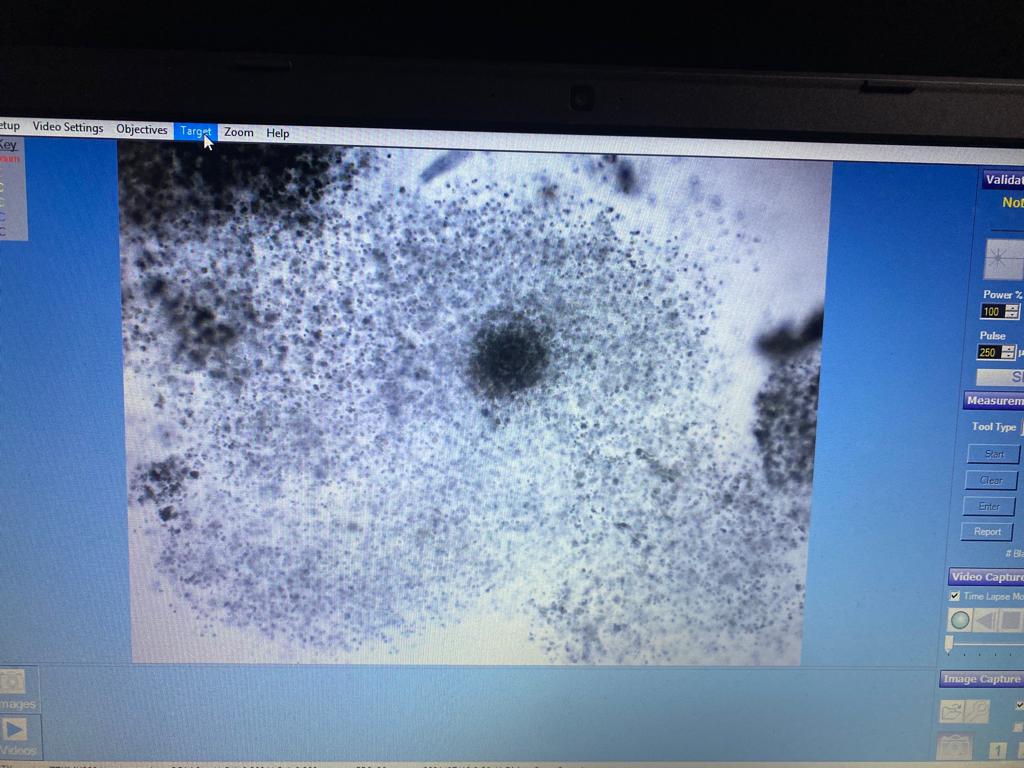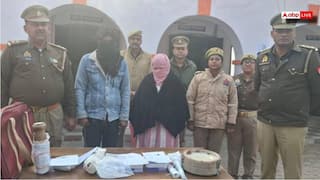The Science Of Health: How Egg Freezing Is Performed, Its Risks, And How Much It Costs In India
The Science Of Health: This week, in ABP Live's health column, we discuss how egg freezing is performed, how much it costs in India, and what its risks are.

The Science Of Health: Welcome back to "The Science Of Health", ABP Live's weekly health column. Last week, we discussed why LASIK is performed, how this eye surgery works, and why it is not always successful. This week, we discuss how egg freezing is performed, what its risks are, and how much it costs in India.
Egg freezing or oocyte cryopreservation is an assisted reproductive technology (ART) technique that involves the hormonal stimulation of the ovaries, followed by transvaginal extraction of a woman's viable eggs (oocytes), and their subsequent freezing and storage, in order to preserve the woman's reproductive potential while she is of reproductive age. The technique allows the woman to thaw her frozen eggs in the future in order to fertilise them when she wants to have a child.
Egg freezing is an excellent mode of ART because the chances of conceiving naturally decreases as a woman gets older, and the number of eggs she has declines. Therefore, egg freezing allows a woman to preserve her eggs when they are of the highest quality.
The scientific procedure for egg freezing
Before egg freezing is performed, a woman is assessed by a fertility specialist through blood tests and pelvic ultrasound to determine the necessary dose of medications. The woman is given injectable hormonal medications to induce ovarian stimulation, after which the oocytes and the surrounding fluid in the ovarian follicles are aspirated vaginally under sedation.
According to the University of California Los Angeles, a specialist assesses the maturity of the eggs under a microscope, and selects the mature eggs for cryopreservation.
Egg freezing can be performed either through slow-freezing or flash-freezing, which is also called vitrification. Flash-freezing is preferred over slow-freezing because it ensures increased oocyte survival after thawing, and improved pregnancy rates. Relevant medical associations recommend vitrification, according to the US National Institutes of Health (NIH).
In the case of vitrification, cryoprotectants are used, and there is ultra-rapid cooling. Ultrarapid cooling is performed to ensure that the cells are solidified, and ice crystals are not formed.
ABP Live spoke to gynaecologists Dr Nisha Bhatnagar and Dr Vandana Ramanathan, and Harshith Salian, an embryologist, and asked them about egg freezing, and the scientific procedure behind it.
Dr Bhatnagar is an MD in Obstetrics and Gynaecology, and the medical director at Infinite Fertility Wellness Centre, a specialised egg freezing facility in Vasant, Vihar, New Delhi. Dr Ramanathan is a DNB in Obstetrics and Gynaecology, has a fellowship in reproductive medicine, and is a consultant in reproductive medicine at Milann, an infertility centre in Bangalore. Salian is the Scientific Director, Embryology and a senior embryologist at Aveya IVF & Fertility center, New Delhi.
Dr Ramanathan told ABP Live that the world's first birth through oocyte freezing and thawing was pioneered by Professor Christopher Chen in Australia, in 1986.
In 2008, a 29-year-old woman gave birth to a baby after the transfer of embryos generated from frozen-thawed eggs. This was the first reported pregnancy and delivery of a baby through oocyte preservation in India, according to a 2009 study published in the Journal of Human Reproductive Sciences.
Dr Bhatnagar told ABP Live that according to the Assisted Reproductive Technology (Regulation) Act 2021, egg freezing is listed as one of the treatments provided by ART clinics. She stated that egg freezing as a legitimate option allows individuals to preserve their fertility for various personal or medical reasons.
Dr Bhatnagar said that injections are administered to the woman for eight to 10 days before the eggs are extracted. Ultrasound is conducted to check the size of the follicles, which are small, fluid-filled sacs in a woman's ovaries. Injections are given to ensure that the number of follicles in the ovaries increases by 10 times. After each follicle becomes 18 millimetres in length, a process called "trigger" is performed. It is the hormonal shot performed to trigger the eggs to mature. This medication prepares the woman's body to release the eggs at just the right time for their retrieval.
According to Dr Ramanathan, a woman who wishes to get her eggs frozen must first undergo a transvaginal scan so that her uterus, ovaries and follicles can be assessed. After this, a few hormonal tests are performed to check the levels of the follicular stimulating hormone and luteinising hormone.
ALSO READ | How Can Men’s Mental Health And Its Awareness Be Improved? Here’s What Experts Say
The follicular stimulating hormone stimulates the growth of eggs in the ovaries, and luteinising hormone triggers the release of egg from the ovary, or ovulation. Her oestrogen levels are also checked.
"If the scans and hormone analysis show normal results, the dose of injection is decided based on her age, weight and the number of follicles in the ovary. These are hormonal injections. The hormones produced by the body every month to allow eggs to grow are injected to increase the number of eggs produced in the ovaries. These injections are given on a daily basis for about 10 to 12 days. During this period, four scans and a couple of hormone tests are performed to assess how the woman is responding to the injection. Once the follicles have grown to the required size after 10 to 12 days, the trigger injection is given. About 34 to 36 hours after administration of the trigger, the extraction of the eggs, or 'egg pickup' is planned," Dr Ramanathan explained.
The woman is taken to the operation theatre 36 hours after the trigger. While the eggs are being extracted, the woman is sedated using anaesthesia.
"All the pre-operative anaesthetic procedures are performed, and the woman is checked to see if all her vital marks are normal. The woman lays on the operation table, and the ultrasound is on. We put a small needle and aspirate all the fluids and follicles out. A small vacuum is used to perform this. The fluid is collected in a test tube, and passed on to the embryologist, who scans the fluid under the microscope to see the eggs," Dr Bhatnagar said.
After the follicular fluid is collected, it is scanned under a stereo zoom microscope, Salian said. "A small, shiny, bead-like structure. This is called the oocyte cumulus complex."
ALSO READ | Are Mental Health Disorders More Prevalent In Women Than In Men? Experts Say It Is Not So Simple
The oocyte cumulus complex contains somatic cells that play an important role in the growth of the oocyte, ovulation and fertilisation.

"We collect the oocyte cumulus complex and keep it inside the incubator. The incubator is something which maintains body temperature. It has six per cent carbon dioxide, and maintains a temperature of 37 degrees Celsius. After about three hours, a procedure called denudation is performed," Salian explained.
Denudation is a process in which the cumulus cells surrounding an egg are removed.
Before injecting an egg with sperm during in-vitro fertilisation, it is important to know if the egg is mature or not.
ALSO READ | Autism, Attention Deficit Hyperactivity Disorder — Mental Health Problems Men Are More Prone To Than Women
"We can make sure if an egg is mature or not by ensuring that it has a polar body. An egg without a polar body is not used for in-vitro fertilisation. In order to check whether an egg has a polar body or not, denudation is performed. The cumulus cells surrounding the egg are completely removed. After this, with the help of the microscope, we can clearly see whether the oocyte has a polar body or not. If the oocyte is mature, it is taken for egg freezing," Salian said.
Dr Ramanathan said that the embryologist can assess the maturity of the eggs only a couple of hours after denudation. Only the good quality and mature eggs are frozen through vitrification.

The egg can also be taken for intracytoplasmic sperm injection.
ALSO READ | The Causes Of Various Kinds Of Sickle Cell Disease, Their Symptoms And Treatment
"The mature oocytes are called M-II oocytes. In order to perform egg freezing, different freezing media are used. There is an equilibration solution and a vitrification solution. The egg is first put in the equilibration solution, and then in the vitrification solution. These solutions are made of cryoprotectants and sugars. We make small droplets of this media on a Petri dish. After being subject to cryoprotectants in the equilibration and vitrification solutions, the eggs are loaded onto a device called Cryotop. This is a vitrification device. Immediately after this, the eggs are plunged into liquid nitrogen. Once the eggs are plunged into liquid nitrogen, they will remain cryopreserved until they are thawed," Salian said.
The eggs are cryopreserved at a temperature of minus 196 degrees Celsius.
ALSO READ | The Science Of Health: How Stem Cell Transplants For Blood Cancers Work, And What The Challenges Are
Benefits of egg freezing
Young women with cancer who are at a risk of sterility as a result of cancer or its treatment have been using egg freezing for fertility preservation since the late 1990s. Social egg freezing, which is opted by a healthy, fertile woman, in order to have a pregnancy later in life, at around the age of 45 to 50, is usually offered to women under 38 years of age, the ideal age being 25 years, because this increases the chances of a future pregnancy. However, mostly women above 35 years of age opt for egg freezing. Nevertheless, this is an effective technique to preserve eggs and have healthy, genetically-related children at a later stage of life.
ALSO READ | The Science Of Health: The Link Between Abnormal Fingerprints And Schizophrenia
Another benefit of egg freezing is that it allows a woman to become a genetic parent using her frozen-thawed eggs, and reduces the risk of having children with chromosomal abnormalities associated with ovarian aneuploidy, which refers to the occurrence of one or more extra or missing chromosomes leading to an unbalanced chromosome complement.
Therefore, egg freezing can be opted by women with cancer requiring chemotherapy or pelvic radiation therapy, those with a family history of early menopause, ovarian failure due to chromosomal abnormalities such as Turner syndrome and fragile X syndrome, genetic mutations requiring the removal of ovaries, women who have had a surgery that may cause damage to the ovaries, those with an ovarian disease that poses a risk of damage to the ovaries, and women who want to preserve their fertility for personal reasons to delay childbearing.
ALSO READ | E-Cigarettes Can Be More Harmful Than Regular Cigarettes, Cause Lung Injury, Experts Say
How much does egg freezing cost in India?
Egg freezing is an expensive technique, and costs over 1.5 lakhs.
"The cost of egg freezing in India can vary from 1.6 to 2.5 lakhs for the entire procedure. However, the maintenance and storage of eggs or embryos is additional," Dr Bhatnagar said.
Risks of egg freezing
Egg freezing is an excellent ART procedure, but it comes with some risks. These include ovarian hyperstimulation syndrome, which refers to the enlargement of the ovaries and fluid accumulation in the pelvis and abdomen, infection, and bleeding during the egg retrieval procedure.
ALSO READ | The Science Of Health: Which Diseases Are Women More Prone To Than Men? Here's What Experts Say
According to the US National Institutes of Health (NIH), mild-to-moderate ovarian hyperstimulation syndrome involves fatigue, nausea, headaches, abdominal pain, breast tenderness and irritability. However, these adverse effects can usually be well-controlled. In about 0.1 to two per cent of patients, severe ovarian hyperstimulation occurs, which results in blood clots, shortness of breath, abdominal pain, dehydration and vomiting. In such cases, the woman must be hospitalised, and in rare instances, death can result.
Other risks for women who wish to undergo egg freezing include multiple pregnancy, premature delivery, pregnancy-related high blood pressure, operative delivery, and infants with low birth weight.
ALSO READ | How Cigarette Smoking Increases The Risk Of Autoimmune Diseases
How successful is egg freezing?
According to the Human Fertilisation & Embryology Authority, a body under the United Kingdom government which oversees the use of gametes and embryos in fertility treatment and research, the success rates of egg freezing are quite low. However, with improving technology, the success rates are increasing. Also, the use of ultra-rapid freezing or vitrification has helped improve the success rate.
ALSO READ | Two-Thirds Of Alzheimer's Disease Patients Are Women. Experts Explain Why Females Are More Vulnerable
“It has taken several years for oocyte cryopreservation to be offered as a successful ART option, with acceptable pregnancy outcomes. The success rate has improved by replacing slow freezing with ultra-rapid vitrification and utilisation of Intracytoplasmic sperm injection for fertilising frozen-thawed oocytes. Oocyte freezing was initially exclusively attempted for fertility preservation in women with cancers who underwent gonadotoxic chemotherapy or radiotherapy. It was in the experimental stage until 2013 when the American society for reproductive medicine (ASRM) approved its use for fertility preservation in oncology patients. In 2018, the ASRM practice committee accepted social egg freezing as ethically permissible and termed it as planned oocyte cryopreservation” (Planned OC),” Dr Ramanathan said.
She concluded that since then, egg freezing has been widely used for various medical indications such as donor egg banking and social egg freezing to overcome age-related decrease in fertility potential.
Check out ABP Live's stories explaining the science behind health-related subjects here.
Check out below Health Tools-
Calculate Your Body Mass Index ( BMI )







































